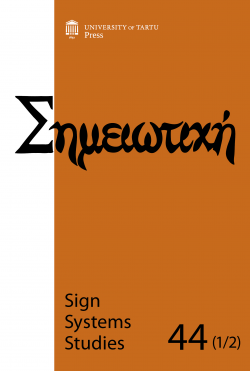Ecosemiotic aspects of zoomorphic metaphors: The human as a predator
Ecosemiotic aspects of zoomorphic metaphors: The human as a predator
Author(s): Ariel Gómez PonceSubject(s): Semiotics / Semiology, Applied Linguistics, Philosophy of Language, Sociobiology
Published by: Tartu Ülikooli Kirjastus
Keywords: metaphor; predation; rhetorical order; Argentinian culture
Summary/Abstract: Through history, predatory features are used to constructs when constructing textual representations on the human/animal frontier. The predatory act has remained a recurring motif that emerges from a metaphoric system in cultural imagination. An ecosemiotic approach to this topic allows us to understand how specific predatory behaviours constitute a source of meaning: in other words, how an alleged “animal tendency” is appropriated (translated) into various cultural texts through metaphors, creating a rhetorical order. To illustrate this, some features of metaphors of predatoriness in certain texts in Argentinian culture will be reviewed. A particularly vivid example is provided by two species, the cougar and the jaguar, that have generated cultural translations which expand and proliferate into contemporaneity. These translations constitute a form in which culture metaphorizes aggressiveness and interprets certain species from a historical and ideological perspective. The Argentinian cases suggest a revision of how history has treated the cultural other in terms of cultural and biological inferiority.
Journal: Σημειωτκή - Sign Systems Studies
- Issue Year: 44/2016
- Issue No: 1-2
- Page Range: 231-247
- Page Count: 17
- Language: English

